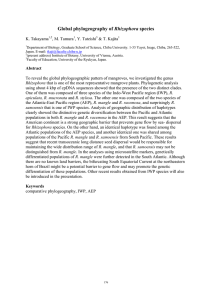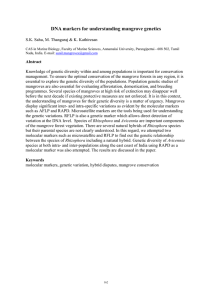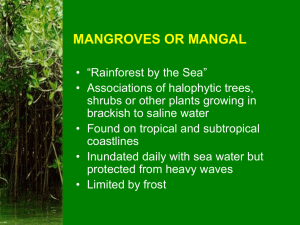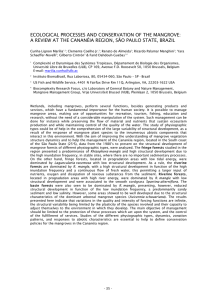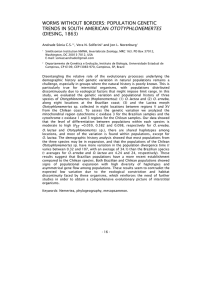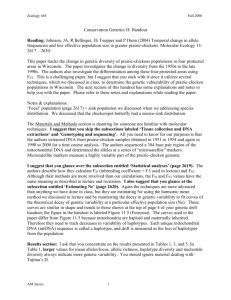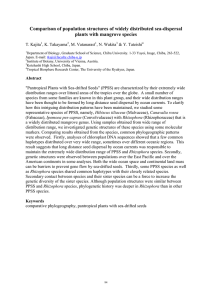Rhizophora mangle (Rhizophoraceae) along the Brazilian coast using microsatellite markers
advertisement
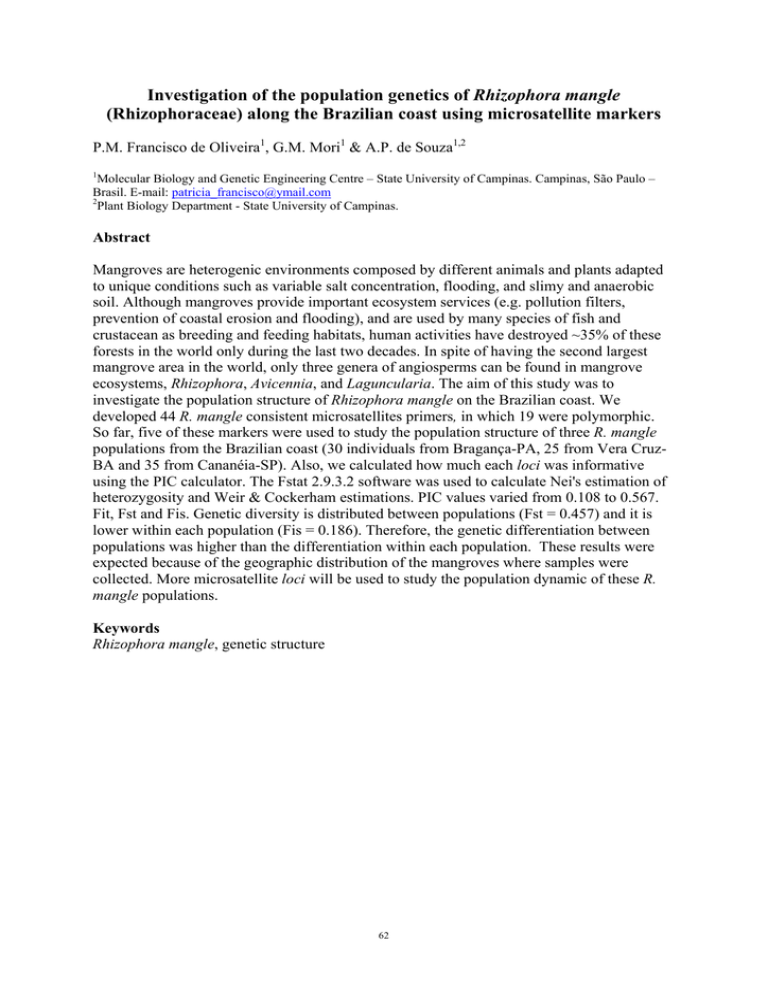
Investigation of the population genetics of Rhizophora mangle (Rhizophoraceae) along the Brazilian coast using microsatellite markers P.M. Francisco de Oliveira1, G.M. Mori1 & A.P. de Souza1,2 1 Molecular Biology and Genetic Engineering Centre – State University of Campinas. Campinas, São Paulo – Brasil. E-mail: patricia_francisco@ymail.com 2 Plant Biology Department - State University of Campinas. Abstract Mangroves are heterogenic environments composed by different animals and plants adapted to unique conditions such as variable salt concentration, flooding, and slimy and anaerobic soil. Although mangroves provide important ecosystem services (e.g. pollution filters, prevention of coastal erosion and flooding), and are used by many species of fish and crustacean as breeding and feeding habitats, human activities have destroyed ~35% of these forests in the world only during the last two decades. In spite of having the second largest mangrove area in the world, only three genera of angiosperms can be found in mangrove ecosystems, Rhizophora, Avicennia, and Laguncularia. The aim of this study was to investigate the population structure of Rhizophora mangle on the Brazilian coast. We developed 44 R. mangle consistent microsatellites primers, in which 19 were polymorphic. So far, five of these markers were used to study the population structure of three R. mangle populations from the Brazilian coast (30 individuals from Bragança-PA, 25 from Vera CruzBA and 35 from Cananéia-SP). Also, we calculated how much each loci was informative using the PIC calculator. The Fstat 2.9.3.2 software was used to calculate Nei's estimation of heterozygosity and Weir & Cockerham estimations. PIC values varied from 0.108 to 0.567. Fit, Fst and Fis. Genetic diversity is distributed between populations (Fst = 0.457) and it is lower within each population (Fis = 0.186). Therefore, the genetic differentiation between populations was higher than the differentiation within each population. These results were expected because of the geographic distribution of the mangroves where samples were collected. More microsatellite loci will be used to study the population dynamic of these R. mangle populations. Keywords Rhizophora mangle, genetic structure 62
